#Drill Hall Johannesburg
Text
Swart Gevaar … Wit Gevaar

View On WordPress
#African National Congress#Afrikaner Nationalism#Afrikaner Weerstandsbeweging#ANC#BMATT#CODESA#Conscription#Drill Hall Johannesburg#End Conscription Campaign#FW de Klerk#Inkata Freedom Party#National Party#National Service#Nelson Mandela#Post Traumatic Stress Disorder#PTSD#SAAF#SADF#SANDF#Shell House#South African Army#South African Defence Force#South African National Defence Force#The National Party#VMS System#Witwatersrand Command
0 notes
Text
Petitions
During an "Active Shooter Drill," Teachers Made a Trans Student Sit in the Hall Alone #care2 https://www.thepetitionsite.com/tell-a-friend/59526653
You Can't Say Climate Change Is Real And Refuse To Do Anything, White House #care2 https://www.thepetitionsite.com/tell-a-friend/59526667
Tell Guns N' Roses to Put Animal Welfare First and Change Their Concert Venue #care2 https://www.thepetitionsite.com/tell-a-friend/59463276
Release Lammie from the Johannesburg Zoo! #care2 https://www.thepetitionsite.com/tell-a-friend/59335023
Justice for Thor and Charlie! Give Ray Neuberger the maximum penalty for animal abuse! #care2 https://www.thepetitionsite.com/tell-a-friend/54676468
Stop the trophy hunt of sharks in Nova Scotia #care2 https://www.thepetitionsite.com/tell-a-friend/58538212
#Petition#Petitions#boost#bosoting#signal boost#signal boosting#transphobia#Trans#trans rights#LGBTQIAP+#pollution#climate change
1 note
·
View note
Link
A memorial within a memorial, “Public Hearing”
The Truth and Reconciliation Commission (TRC) was established to, amongst other goals, facilitate the ‘rehabilitation and the restoration of the human and civil dignity of victims of violations of human rights’. At the time, the TRC was the first restorative justice process of its kind to conduct public hearings and provide space for survivors to tell their stories in their own words. The formal hearings began on 15 April 1996 and the hearings made international news and many sessions were broadcast on national television.
The public face of the TRC – were the stories told of the everyday violence of the apartheid system; the experiences of forced removals, systematic discrimination, forced labour, targeted impoverishment and the institutional and psychological violence that was integral to the apartheid system were not given attention but physical violence was regarded as the most important type of violation. This in turn has obscured the full impact of the injuries experienced in a broader context of lifelong oppression in which these individual violations occurred.
The work of the TRC was accomplished through three committees: Human Rights Violations Committee that investigated human rights abuses that took place between 1960 and 1994. Amnesty Committee was empowered to grant amnesty to those charged with atrocities during Apartheid and the Reparations and Rehabilitation Committee was charged with restoring victims' dignity and formulating proposals to assist with rehabilitation. The Amnesty Committee, however, had legal powers of enforcement, the Reparations and Rehabilitation Committee (RCC) could only recommend a reparations program to government with no authority to ensure its implementation.
“Public Hearing” at the Drill Hall departs from this narrative of history while in another stream of thought be in conversation with the Reparations and Rehabilitation Committee and the larger aspect of the TRC. Recognising that the hearing is the first of any kind at the Drill Hall related to the context of the site. “Public Hearing” takes place on the 14th April the day before the formal TRC hearings that began 15 April 1996 so as to nod to the binary that connects the two.
Joubert Park Project/Keleketla! Library’s work at the Drill Hall from 2004 to 2014 can be viewed as merely a recommendation of processes to the City of Johannesburg on how we see the methodology of engagement with the mandate of the site (in art, culture, heritage and education) in conversation with the ‘complex’ neighborhood. But like the RRC without the authority to implement its reparation programme, JPP/Keleketla! had no authority to legitimize its programming and its direct development at the site because of the infamously unattainable lease amongst other structural issues. “Public Hearing” is also an attempt to highlight the much needed restorative process to the Drill Hall to help animate the site from its current sad state. The hearing will be broadcasted online across social platforms to reach our local, regional, continental and global constituency beyond the physical hearing at the Drill Hall.
A memorial within a memorial, “Public Hearing” is a performance of memory against erasure, but a performance of accountability, in which people (rather than property itself) are implicated in issues having to do with land, rent and the asymmetry in how culture is produced, consumed and memorialised in a country such as South Africa.
“Public Hearing” formed part of Malose Malahlela’s contribution to The Centre for the Less Good Idea Season 3, itself part of Keleketla!’s 10 year reflection, embedded within that process is the need to create transparency and highlight the narrative around the Drill Hall issue in relation to Keleketla!’s exile from the site.
The Drill Hall is a large historical infrastructure that occupies an entire city block in Joubert Park, Johannesburg. It is located in the dynamic transport hub, lending itself to a wide range of activity and accessibility. The site was built in 1904 as a military base for the conscription of World War One and Two soldiers. It is widely known for the 1956 Treason Trial of South Africa, in which 156 leaders under the auspices of the Congress of the People were arrested for trial.
3 notes
·
View notes
Photo
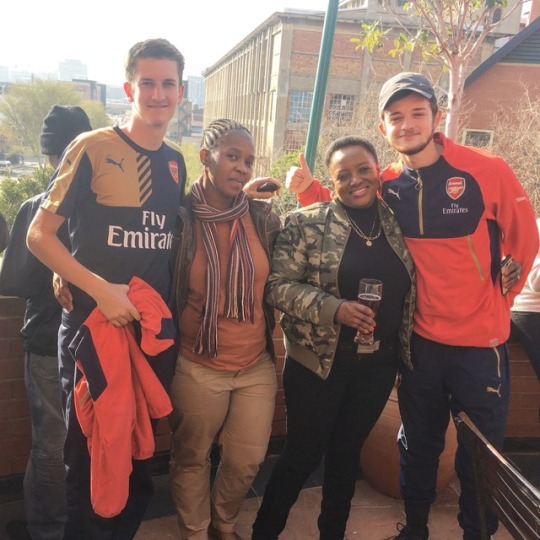


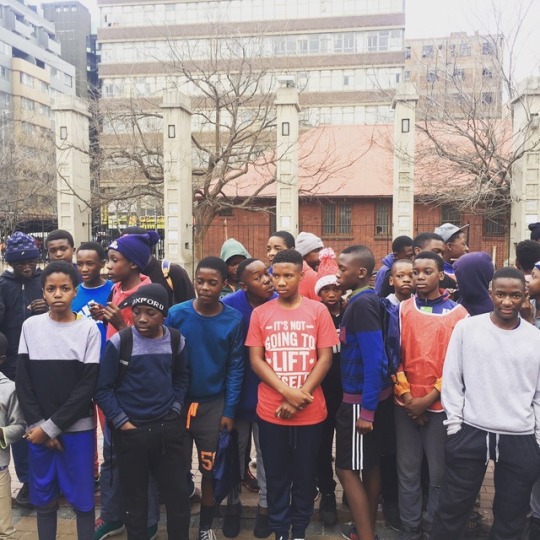
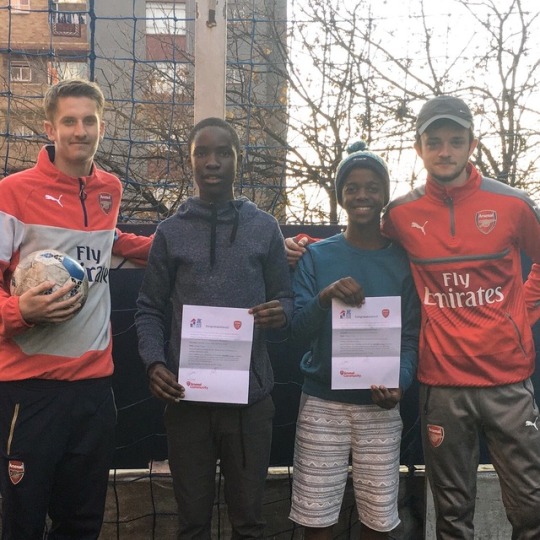





#arsenal#arsenal gap programme#south africa#arsenal south africa#arsenal johannesburg#johannesburg#jozi#joburg#afc#arsenal gap year#travel#sa#arsenal gap year 2017#south african#gauteng#drill hall#hillbrow#cruyff court
0 notes
Photo

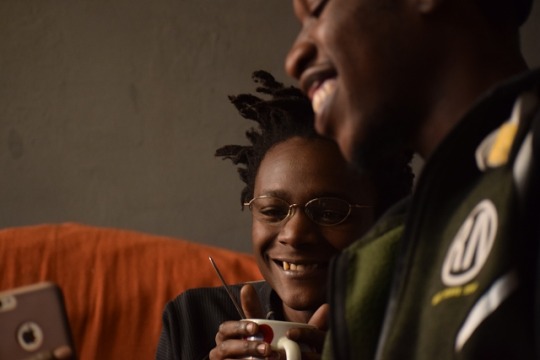

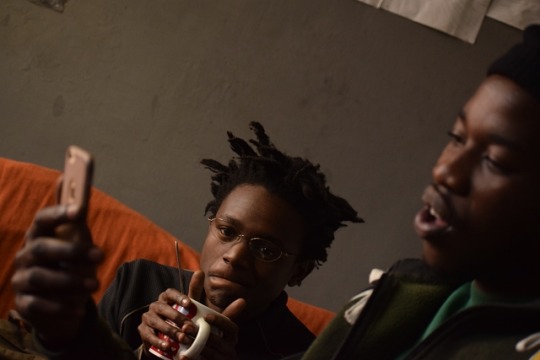
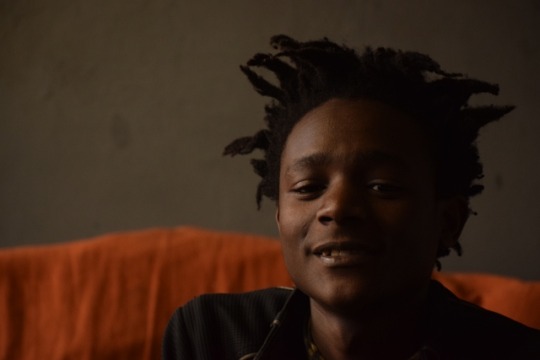



The bloody city can make you bleed from your essence. When the scab forms, all the blood that doesn’t make you who you are falls away. Your true character heals the pain that once stuck the heart, and now is no more.
On a physical level this is true. If a study on the volumes of blood lost in the streets or homes of Jozi CBD were to be carried out (since its inception) the litres would be astronomical. Times that by the number of souls lost, divided by the ones that were saved. Then add the number of assholes to it, subtract the decent, and you’ve got a fuckery of an equation that doesn’t make sense but it works.
Johannesburg has got a lot of unseen forces. Forces that prey on lust, the love for money, the interest in humanity, well sometimes.. Forces that prey on our weaknesses, forces that prey on what we hold dear..
The thing about force.. It is a direct reaction one object has simply from interacting with another. So ultimately; the mysterious force that runs Johannesburg is the collective consciousnesses every being in Johannesburg projected onto a city that has many lights in the outside, and many dark souls inside.
With that being said. On a level of projection; are we collectively comfortable putting out the current energy? If not, then what would the appropriate explanation be for the state?
You do, however, find people and places that welcome you with warmth. That welcome you with innocence, and purity. Cardo and Weys at Drill Hall is such an example.
‘Coffee? Tea? Let me clean up a little bit.. I’ve asked these guys soo many times to keep this place clean.’ These were the phrases I was greeted with, upon entering the space. No one can accurately describe Drill Hall because it has so many faces. So faces that have seen soo many faces. My face saw what it did, and I’d like to hear what other faces have seen. Does Drill Hall follow in the footsteps of his Farther? Or is Drill Hall taking a different path?
0 notes
Text
HBO Launches Official YouTube Channel
Getaway in Lausanne is the correct answer to the feeling of solitude, which is a fantastic way to escape from the busy city life. Nevertheless no sign of Randy, but each and every and every single day, my group of searchers continue to function collectively to come across him. By Vivastreet Nantes Rencontre , the African majority had not yet been represented in the Central Parliament and the Provincial Council which had limited legislative power over the 4 Provinces(Natal, Transvaal, Orange Free State and the Cape).
We need to raise our level of vigilance, study and know our history, obtain techniques and suggests to get it from FB to the man in the street who has no such understanding or awareness and expounded upon by Chinweizu be in a position to break down these advices to be in tandem with the realize, demands and relevance to the the poor Africans of South africa.
Gallery Of Attractive Paris Escorts wish Mr. Meeting An Escort Throughout A Layover At The Airport had stepped out of the marble halls of Cape Town University, working tough to impress those tough line Verkrampte professors, and did some interviews with the returning guerrillas within South Africa and how they were treated as refugees in different African nations, he may not carelessly create about how 'Africa helped South Africans and had been involved in the struggle, only if he knew how scared these states have been of the Boers, they have been incredibly really hard and harsh in containing the South African refugees, lest they be air-raided and attacked also by the mercenaries and South African White commandos.
Africans had been compelled to carry passes or reference books(got scrapped towards the finish of Apartheid). In South Africa and numerous other countries hunting to embrace the drilling, the minerals below a property are more generally owned by governments, not people.
Meanwhile rape and prostitution can be seen showcased on local Newspapers front pages-call girls standing in certain areas in Downtown Johannesburg promoting the wares you see people shown behaving indecently, and onlookers carrying and taking photographs and carrying on-plucked on the front-pages of the local gossip newspapaers the abuse of females and children incredibly intense and numerous die simply because of that life-style.
0 notes
Text
TEI Rock Drills is headed to Africa!
Our very own President, Sue Frank, and Glenn Patterson, Director of International Sales, will be attending the Electra Mining Africa 2018 expo in Johannesburg, South Africa September 10-14. They will be representing TEI at one of the largest events of its kind in the world with over 850 exhibitors – more than its ever seen in its 46-year history.
Mining, manufacturing, electrical, and power industry leaders will be gathering together to learn from each other and stay informed of new technology. Each day of the week-long expo will feature a different theme, including safety, diversity, and skill development. The event promises to have a highly immersive environment where industry experts will be available for seminars and hands-on demonstrations of new products.
Our long-time client, Demolition & Drilling Equipment (DDE), is located in South Africa and will have an exhibit at hall OS, stand P1202. They’ve been extending an invitation to Sue and Glenn to join them for several years, and they’re finally taking them up on their offer.
Safe travels, guys!
Check back soon – we’ll be posting pictures of their adventures.
The post TEI Rock Drills is headed to Africa! appeared first on TEI Rock Drills.
from
https://teirockdrills.com/tei-is-headed-to-africa/
from Engineering Blog http://teirockdrills1.weebly.com/blog/tei-rock-drills-is-headed-to-africa
0 notes
Text
TEI Rock Drills is headed to Africa!
Our very own President, Sue Frank, and Glenn Patterson, Director of International Sales, will be attending the Electra Mining Africa 2018 expo in Johannesburg, South Africa September 10-14. They will be representing TEI at one of the largest events of its kind in the world with over 850 exhibitors – more than its ever seen in its 46-year history.
Mining, manufacturing, electrical, and power industry leaders will be gathering together to learn from each other and stay informed of new technology. Each day of the week-long expo will feature a different theme, including safety, diversity, and skill development. The event promises to have a highly immersive environment where industry experts will be available for seminars and hands-on demonstrations of new products.
Our long-time client, Demolition & Drilling Equipment (DDE), is located in South Africa and will have an exhibit at hall OS, stand P1202. They’ve been extending an invitation to Sue and Glenn to join them for several years, and they’re finally taking them up on their offer.
Safe travels, guys!
Check back soon – we’ll be posting pictures of their adventures.
The post TEI Rock Drills is headed to Africa! appeared first on TEI Rock Drills.
source https://teirockdrills.com/tei-is-headed-to-africa/
from Engineering https://teirockdrills.blogspot.com/2018/09/tei-rock-drills-is-headed-to-africa.html
0 notes
Photo
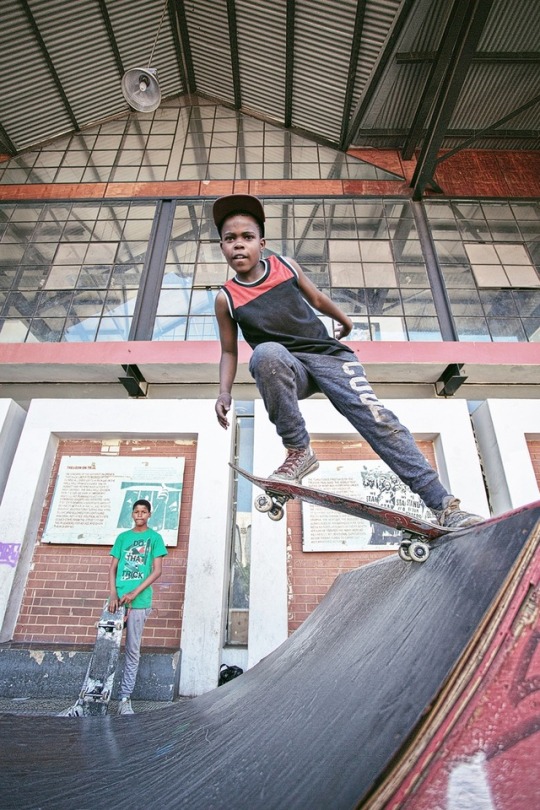
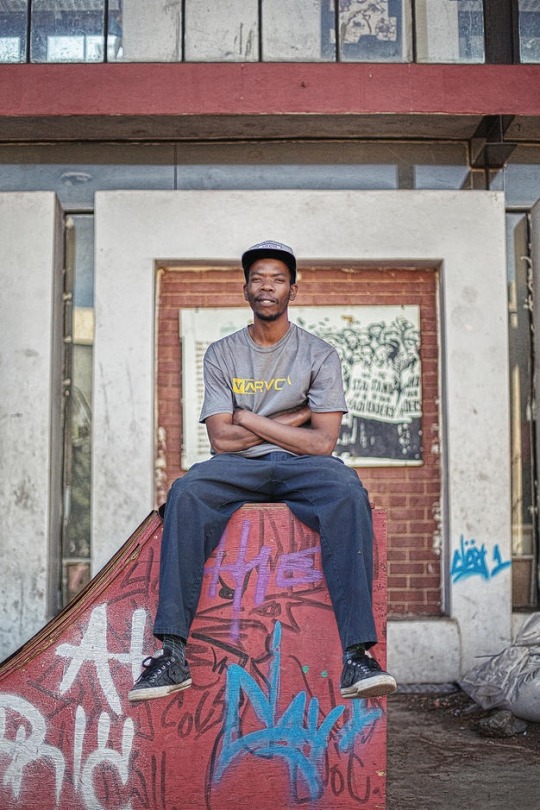
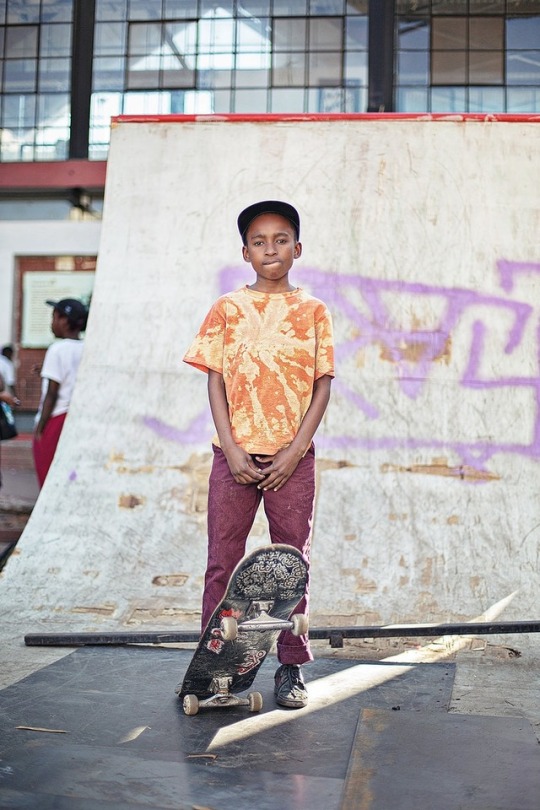



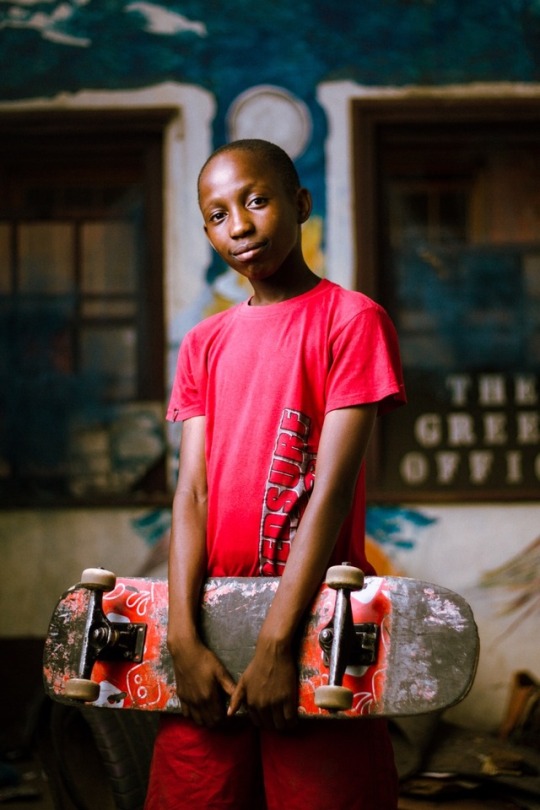
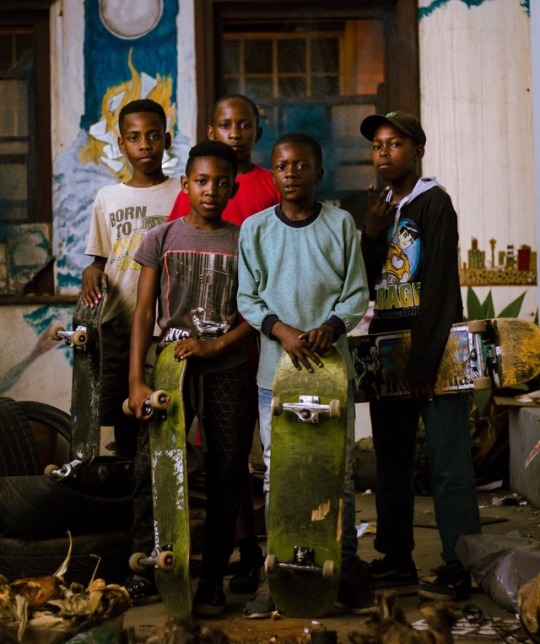
0 notes
Text
Drill Hall
This week we heard the terrible news that 32-year-old skater and youth leader Kabelo Refilwe Makwa (known as KB) was murdered at Drill Hall. His death sent shockwaves through the Jozi skating community. A father, skater and mentor, KB gave children an opportunity to combat boredom and stay safe through skateboarding. His activities invited children to use the same playground we had been using to lead football sessions every Wednesday and Thursday.
KB passed away early on Saturday evening, after arriving at Drill Hall to work with vulnerable children, helping them to avoid trouble. Unfortunately trouble found him. Upon noticing a young man in the corner of the skatepark taking cocaine, KB confronted him, requesting he stopped due to the presence of children. He was viciously attacked. Tragically, the stab wounds to his chest and neck proved to be fatal.
Whilst KB’s legacy lives on, the tragic events of the 20th May 2017 remain deeply concerning. In an attempt to analyse the reasons behind such a deadly act, I was reminded of an interesting area of study. Can a trend of negative events in one location be attributed to psychogeography? Are certain places inherently bad? Or are other factors to blame, such as the deregulation of drugs, and sky high unemployment rates?
Introduction to Psychogeography
Psychogeography refers to the study of the influence of the geographical environment on the mind or on behaviour.
Revered psychogeographer Iain Sinclair states that buildings and structures withhold the capacity to produce invisible geometrical power lines. In his poem Lud Heat, he frames Hawksmoor’s St-George-in-the-East as a focal point for evil. He describes the church’s looming architecture as a forceful beacon for human cruelty. There is veracity to his argument, as the site bear witness to the bloody Ratcliffe Highway murder plot in 1811.
Sinclair’s work suggests that certain locations possess an unacknowledged magnetism. Is it possible that one place can attract danger, whilst a neighbouring site could draw the antithesis of the former? Is Paris the city of love due to a cultural development of art, music and literature? Or is there a psychogeographical explanation? Can this approach be applied to the danger zones of Johannesburg? Or is it simply government enforcement that has led to ghettoisation? My recent visits to Drill Hall got me thinking.
History of Drill Hall
The Hall was first built in 1904 as a military base. Prior to this, the same space was utilised as a native prison, but it eventually descended into ruins.
Upon refurbishment and redevelopment, Drill Hall became a significant location in South African heritage. In 1956, the Hall was selected to stage the Treason Trial, in which 156 anti-apartheid activists (Nelson Mandela included) were charged with treason. The initial stages of the trial took place in Drill Hall, but eventual security concerns forced the trials to be moved to Pretoria.
By the latter stages of the twentieth century, Drill Hall’s chaotic magnetism began to augment. In July 1987 an automatic driverless car, laden with explosives, was launched into the Hall. What was once a safe headquarters for the military was now an abandoned shell in disrepair. Squatters began to settle in the dilapidated grounds of the heritage site. It is estimated that 350 families lived without electricity, running water or basic sanitation facilities. In 2002, the entire site burnt to the ground. It is said that a woman committed arson during an argument with her husband. Four adults and two children died as a result of the blaze.
Following study of Drill Hall’s morbid history, it does not appear unjustifiable to understand the events in psychogeographical terms.
Drill Hall Today
Overlooked by art studio balconies and surrounded by pillars depicting the names of important figures in the Treason Trial, Drill Hall is a stones throw away from the booming soundsystems of the MTN taxi rank. It is a heritage site that nurtures artists and encourages community engagement with sports and activities. Smartly dressed schoolchildren flock to the open space every day; running, skating and playing football. Younger ones slide down skate ramps and halfpipes intermittently, nonchalantly dodging skateboards with rhythmic reflexes. There is a youthful energy and a stamp of African culture.
People Power
Undoubtedly, Johannesburg is a dangerous city. And Drill Hall certainly has a checkered past. From bombings and arson to brutal murder, it would be perfectly fair to consider psychogeographical explanations to understand these worrying trends. Perhaps there is a sinister unacknowledged magnetism. But even if this were to be true, there remains a positive social environment at Drill Hall. Children continue to rush in their hundreds after every school day. The grounds reverberate even days after a fatality. It is a site that admirably defies its circumstances.
Conclusions
In order to keep children and young people protected, it is crucial to promote safety measures at Drill Hall.
Currently, police presence is severely limited in the inner city. Private security firms occupy the streets, but dominate in the wealthier districts. To protect heritage sites and continue to promote sports and culture, the government must look to improve security funding in poorer areas. The rich have high walls, barbed wire fences and CCTV surrounding their homes. The poor are left in grave danger. The disparity between the socio-economic classes is crystal clear. Walk through the glitzy suburbs of Rosebank or Sandton and you will see twenty-five security cameras surround a six bedroom house. Poorer civilians are left choosing between twenty-five to life or six feet under.
REST IN PEACE K.B.❤️
#johannesburg#jozi#south africa#sa#agp#arsenal gap programme#skating#skateboarding#drill hall#treason trial#mandela#sandton#rosebank#private security#football#soccer
0 notes
Text
Very few people today (including many SADF military veterans) are aware that Umkhonto we Sizwe (MK) insurgents actually attacked some bone-fide South African Defence Force (SADF) military installations, but only a handful of occasions and this story covers one of them – the bombing of the Witwatersrand Command’s building – the Drill Hall (known as Wits Command).
Other than the bombing of Wits Command and the Nedbank Plaza in Pretoria (which housed the target – a SAAF command office), the only other standout ANC MK attacks on actual SADF installations were low key and completely ineffectual. These included the rocketing of the Personnel Services army base in Voortrekker Hoogte (with minor injuries to one civilian and no substantive building damage). The faulted attempt at bombing a Wits Command medic centre in Hillbrow (no injuries). The speculative bombing of some cars in the car-park of the Kaffarian Rifles (no injuries, and no information either). Finally, the bombing of a dustbin outside Natal Command (no injuries or building damage).
Information on the bombing at Wits Command itself is really difficult to come by, at best it is presented as a resounding victory by MK claiming 58 injuries and 1 death of SADF personnel and at worst there is little to almost no information, video or photographs on both the military and media records of any deaths and damage at all. There is certainly no death of a SADF serviceman recorded on the honour roll. So where does the truth lie?
There are two key reasons why this incident remains obscured. Firstly, although a bomb had gone off in down-town Johannesburg (no hiding that), the grip of the National Party over South African media limited ensured the incident would be carefully managed (attacks on SADF military installations would affect morale) and, more importantly, it was very carefully managed because of the profile of the Umkhonto we Sizwe (MK) attacker who committed it. The outcry, profile and ‘hunt’ for him was somewhat muted, angry announcements identifying him for the purposes of the ‘hunt’ were made, yes – but in-depth media analysis on the attack or investigative journalists seeking an exposé on the attacker’s profile and motivation – no – there’s nothing of this sort.
Simply put, this muted outcry was because this particular MK operative was from an upper class, ‘white’ Afrikaner, well to do and influential family. He grew up in an up market ‘white’s only’ conservative suburb in Johannesburg and attended a prestigious Afrikaans High School – he didn’t fit the National Party’s ‘swart-gevaar’ (Black danger)/’rooi-gevaar’ (Communist danger) terrorist narrative of the time, he was in fact embarrassing enough ‘one of their own’.
So, lets get to the ‘truth’ of matter in all of this, what was the actual damage caused, what actually happened?
Background
On 30 July 1987, a bomb exploded at the Witwatersrand Command’s Drill Hall injuring 26 people (no deaths), the injured were made up of a mix of both military personnel and by-standing civilians. The Drill Hall was targeted because not only was it a military installation, it was also the same historic Hall in which the 1956 Treason Trial took place and significant to ‘struggle’ politics.
The ‘Treason Trial’ had lasted from 1956 to 1961 (not to be confused with the ‘Rivonia Trial in 1964) and revolved around 156 people arrested on charges of treason – it was overseen by Oswald Pirow and it included a mix racial bag of South African political party leaders from across the spectrum, notably Nelson Mandela, Ahmed Kathrada, Walter Sisulu, Stanely Lollan, Helen Joseph, Joe and Ruth Slovo and Leon Levy to name a few. They were all found ‘not guilty’ but the trial did force Oliver Tambo into exile.
Treason Trial in the Drill Hall
So, like the mixed racial bag of the Treason Trial itself, the actual attack on the Drill Hall (by then a SADF command centre and military building) did not come from an angry disenfranchised ‘Black’ ANC MK operative, rather, this attack came from very “blue blooded” ‘White’ Afrikaner – Heinrick (Hein) Grosskopf.
The Bombing
As part of the Amnesty Truth and Reconciliation Commission hearings Hein Grosskopf, by that stage a former MK operative, revealed how he detonated a car bomb at the Witwatersrand Command military base.
Grosskopf, a graduate of Linden Hoërskool (High School) and the son of Johannes Grosskopf, a former editor of the Beeld newspaper, said he joined the African National Congress in exile in 1986 after concluding that apartheid was reprehensible.
Johannes Grosskopf
He linked up with the ANC in Lusaka, where he volunteered for MK military service and after undergoing training in Angola, he returned to Lusaka at the end of 1986.
Six months of planning then went into the attack, which was to be a “one-man” operation. An attack on the Braamfontein gas works in Johannesburg had also been considered, but it was rejected as too dangerous for civilians in the area. Witwatersrand (“Wits”) Command was chosen after much deliberation and according to Grosskopf;
“Because the state had so clearly politicised the role of the SA Defence Force by deploying troops in townships, SADF personnel and installations were by definition justifiable targets.”
The explosion was planned to go off by 9.45am, when the morning rush-hour was over, children would be in school and restaurants around the site were still closed. A car with an automatic gearbox would be used and by lashing the steering wheel in a fixed position, the car could be made to move without a driver towards the target.
In June 1987, Grosskopf entered South Africa on a motorcycle from Botswana, along the way he bought an old Valiant pickup ‘bakkie’ in De Deur and travelled to Johannesburg with the motorcycle in the back of the ‘bakkie’.
After booking in at the Holiday Inn in Pretoria, under the name if JR Evans, Grosskopf rented a small flat in Linden, Johannesburg (a suburb he was highly familiar with and near his old High School).
Between the 5th and 10th of July 1987, Grosskolf carried out reconnaissance at Wits Command and found it would be possible to park in Quartz Street, opposite the target. He also measured the height of the pavement the attack vehicle would have to mount before reaching the wall of Wits Command.
After concluding that the operation was feasible, Grosskopf returned to Botswana and requested 120kg of explosives from his support group. The load was hidden behind the seats of the bakkie, and steel plate was welded over it.
On July 17, Grosskopf rented a house in Ventersdorp, intending to use it as an operational base, believing that a single Afrikaner would be under less scrutiny in a small town than in Johannesburg’s suburbs, but as he was moving in, two policemen arrived and asked why his bakkie was registered in a name different from the one he used when renting the house. Thinking his cover might be blown Grosskopf spent only one night in the house before returning to Johannesburg.
Early on the day of the attack, he rode into Johannesburg on his motorbike and left it two street blocks from the target. He returned to the Linden flat by taxi. Around 9am he left for Johannesburg after loading the explosives into the bakkie. The vehicle was parked in Quartz Street. With the car idling, he lashed the steering wheel in the required position and threw three switches to arm the vehicle and bomb, got out the vehicle, locked it and walked towards Sterland (a cinema complex) next to Wits Command.
Just before reaching the inside of the Sterland complex proper, the Valiant’s engine revved very fast and loudly, with the explosion that followed. He jumped on the motorcycle and rode back to Linden, collected some belongings and then headed for Botswana on the motorcycle.
Aletta Klaasen was 17 years old when she lost her left eye in the explosion. Minutes before the blast she had been talking to two SADF soldiers in front of the building, Cpl. Paul Duncan and his army chum Stoffel, when Grosskopf parked his vehicle close by to where they where standing.
She noted Grosskopf looking in her direction and called out to him “What are you looking at – I’m not for sale” (the area around Wits Command was a notorious ‘red light’ district known for prostitution). He turned around and walked off and shortly after that the bomb went off.
When she recovered from the blast she noted that one of the SADF troops, Cpl. Paul Duncan, who she was chatting to, was blown off his feet and found in the guardhouse, bleeding from the head and unconscious – he later fully recovered from his injuries.
An unassuming and quite person, Grosskopf built up his hidden resentment of the status quo whilst a student at Linden Hoērskool, were he had been bullied and teased by the vastly conservative white Afrikaans students for his “liberal” views. On matriculating from Linden Hoërskool, Hein Grosskolf, although openly stating he would never join the South African Defence Force (SADF), did in fact attend to his national service military call up and was discharged from his SADF conscription commitment on medical grounds. Highly politicised, he then went on to join the ANC and its military wing MK.
Aftermath
The Drill Hall after the bombing was deemed by the SADF to be an ‘unsafe’ building due to structural damage caused it and the Command moved into a high-rise building adjacent to the Drill Hall. On occasion the Drill Hall would be used by Citizen Force units and Regiments for mustering (in the very famous hall in which the Treason Trial took place) but more often than not it remained empty but guarded during the early 1990’s.
Once the command relocated from the high-rise building to Doornkop military base in the mid 1990’s, the drill hall building was taken over by vagrants and became an informal settlement – it eventually became derelict, caught fire and burned down. Today, the façade and some perimeter buildings is all that remains of the complex. The façade has been restored as a monument to Johannesburg’s history and the significant historical events which took place in the building – including it’s bombing.
Truth and Reconciliation
Aletta Klaasen and Hein Grosskopf were both at the TRC Hearing in November 2000, Grosskopf apologised to Aletta in person and regretted the injuries caused to civilians. Grosskopf concluded the meeting by saying that he was proud of the small role he had played in the struggle for freedom. He said,
“Taking a life is never easy. I believe all life, even that of my enemies is sacrosanct. Violence can never be good; it can only be necessary. I am truly sorry for the injuries and suffering I caused”
At her request Klaasen and Grosskopf met for a few minutes in private after the hearing and then they both posed briefly and rather awkwardly for this photograph (note the body language). Neither of them elaborated on their meeting, Klaasen was only prepared to say that it had been good.
Heinrich Grosskopf, was granted amnesty by the Truth and Reconciliation Commission on 13th December 2000 whilst he was resident in the United Kingdom, it is thought he may still be there, and there is an irony here. One of the SADF victims of the bombing – Paul Duncan, also lives in the United Kingdom now. Paul was kind enough to recount his eye-witness account (both as a casualty and the fact that he was very near the epicentre of the blast). ‘Reconciliation’ and ‘apologies’ aside, I have it on good authority that it’s very unlikely Hein will be attending one of Paul’s famous ‘braai’s’ (a South African barbecue) in England anytime soon.
Written and researched by Peter Dickens
Reference: News 24 Archives. Interview with Paul Duncan. South African History On-line. Wikipedia.
The truth behind the bombing of Wits Command Very few people today (including many SADF military veterans) are aware that Umkhonto we Sizwe (MK) insurgents actually attacked some bone-fide South African Defence Force (SADF) military installations, but only a handful of occasions and this story covers one of them - the bombing of the Witwatersrand Command's building - the Drill Hall (known as Wits Command).
#African National Congress#MK#SADF#South African Army#South African Defence Force#Umkhonto we Sizwe#Witwatersrand Command
0 notes